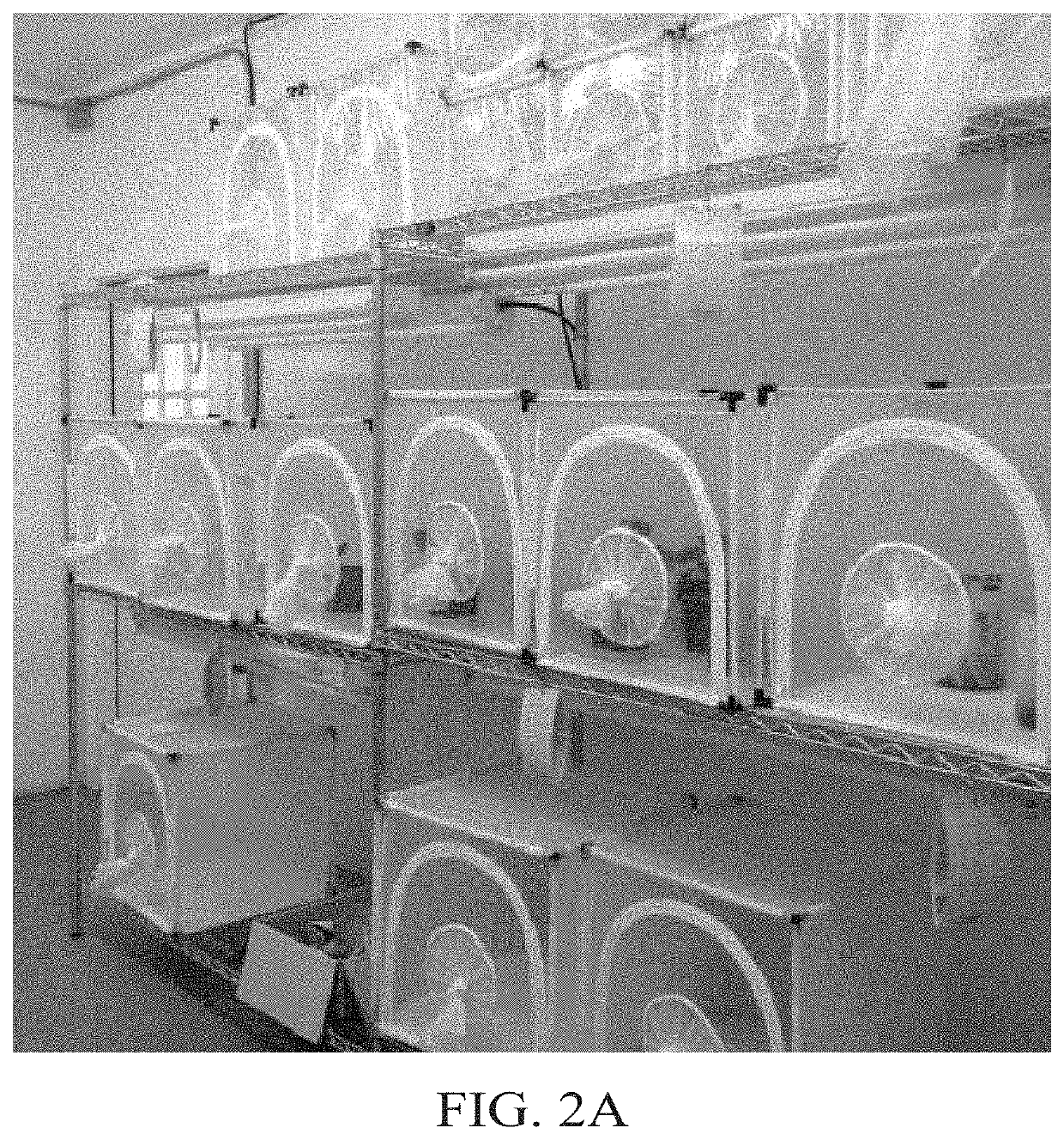Methods, compositions, and systems for culturing and characterizing fastidious plant microbes
a fastidious plant and microbe technology, applied in the field of methods, compositions, systems for culturing and characterizing fastidious plant microbes, can solve the problems of laborious and time-consuming, inability to culture in the laboratory to allow study, and the devastating effect of phytopathogens alone on several food and commodity crops, so as to achieve a convenient, rapid and scalable platform for cultur
- Summary
- Abstract
- Description
- Claims
- Application Information
AI Technical Summary
Benefits of technology
Problems solved by technology
Method used
Image
Examples
example 1
g an Explant and / or Inoculum Source
[0169]FIGS. 2A through 2G illustrate an example of using fastidious microbe carrying insect vectors to generate plants colonized by the fastidious microbe for use as explants in hairy root methods and systems. Specifically, FIGS. 2A and 2B illustrate Lso-carrying and Lso-free potato psyllid colonies (Central haplotype), maintained in insect cages at the Texas A&M AgriLife Center-Weslaco. The psyllids were originally collected from commercial potato fields near Dalhart, Tex. in 2007. As shown in FIG. 2A and FIG. 2B, the psyllids were fed on eggplants and kept at 25° C. with a 12:12 light:darkness (L:D) hour photoperiod and about 50% relative humidity in a controlled growth chamber. Periodically, a psyllid colony (e.g., Lso-carrying, Lso-free) was tested for the presence or absence of Lso colonization using 16S rDNA PCR.
[0170]To generate explant material, ten adult Lso-carrying psyllids were released into cages containing two-month to three-month-old...
example 3
Induction of Microbial Hairy Roots
[0173]Portions of both healthy plants and plants colonized with Lso were harvested including cotyledon, hypocotyl, immature shoot, and immature root regions. The plant portions were surface sterilized using a solution containing 70% ethanol, 2.5% or 10% NaClO, and water. As shown in FIG. 3A, portions of the surface sterilized plants were cut using a scalpel into pieces having a length of about 2 cm each. Additionally, each of the pieces was gently wounded using a sterilized pair of fine forceps to generate prepared explants.
[0174]As shown in FIG. 3B, the prepared explants were contacted with a suspension of R. rhizogenes by immersion in a suspension prepared as described in EXAMPLE 2. The immersed explants were agitated for a period of 20 min. As shown in FIG. 3C, the explants were then removed from the suspension of R. rhizogenes and placed on a plate of ½ MS or ½ B5+3% sucrose medium. The explants were incubated on plate for 72 hours at about 21-2...
example 4
Induction of Aerial Microbial Hairy Roots and Transgene Delivery
[0182]Healthy plants (control) and plants infected with Lso were selected, and select plant surfaces were surface sterilized using a solution containing 70% ethanol, 2.5% or 10% NaClO (bleach), and water. A suspension of R. rhizogenes was prepared as described in EXAMPLE 2.
[0183]Induction of aerial microbial hairy roots was performed by gently wounding stem tissue and / or leaf tissue of a surface sterilized region of an Lso colonized plant using a needle dipped in the R. rhizogenes solution. The R. rhizogenes strain used contained both an Ri-DNA plasmid and a T-DNA plasmid with the T-DNA plasmid encoding a green fluorescent protein (GFP). Healthy plants were also induced for aerial hairy root formation using the method described above for use as an experimental control. The exposed wound sites were wrapped in aluminum foil to reduce exposure to light and help maintain desired humidity levels at the area of exposure. The ...
PUM
| Property | Measurement | Unit |
|---|---|---|
| time | aaaaa | aaaaa |
| Quantitative Real Time PCR | aaaaa | aaaaa |
| Quantitative Real Time PCR | aaaaa | aaaaa |
Abstract
Description
Claims
Application Information
 Login to View More
Login to View More - R&D
- Intellectual Property
- Life Sciences
- Materials
- Tech Scout
- Unparalleled Data Quality
- Higher Quality Content
- 60% Fewer Hallucinations
Browse by: Latest US Patents, China's latest patents, Technical Efficacy Thesaurus, Application Domain, Technology Topic, Popular Technical Reports.
© 2025 PatSnap. All rights reserved.Legal|Privacy policy|Modern Slavery Act Transparency Statement|Sitemap|About US| Contact US: help@patsnap.com



